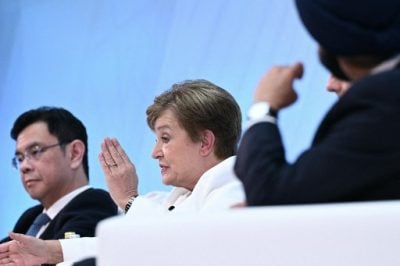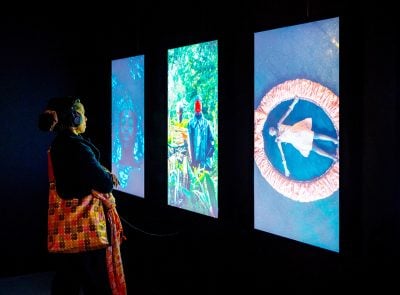Current exploration and investment decisions could make Mozambique one of the world’s 10 largest exporters of liquefied natural gas (LNG) within 10 years. Luís Fonseca looks at the details
Claudio Descalzi, CEO of Italian gas and oil company ENI, has likened Mozambique’s liquefied natural gas potential to a “feast”.
The feast, which Mozambique and its international partners yearn for, boasts a starter and two main courses that could place the country among the world’s 10 largest exporters of liquefied natural gas (LNG) within the next decade.
The banqueting will begin in 2022, when 3m tonnes of natural gas per year (3mtpa) will travel in a liquefied state under the high seas.
“It’s a large starter. It’s lunch, dinner, even, but we prefer to call it a starter in comparison with the much larger reserves that Mozambique has,” said Descalzi during the announcement of a final investment decision to fund a floating platform that will be connected by an umbilical cord to the Coral Sul reserves.
One of the “main courses” is expected to be served in 2024, by the Area 1 consortium. The plan envisages two 12.88mtpa LNG pipelines on the Afungi peninsula running from the Golfinho and Atum reserves. With further deposits to tap into, this could expand to up to eight lines. The final decision to invest was announced in June 2019 by Anadarko, since bought by Occidental, which in turn sold its LNG assets to Total. “As a new operator, we are fully committed to the project”, affirmed Total CEO Patrick Pouyanné in September.
The second main course will be served by the Area 4 consortium with the exploration of the Mamba deposits, which will feed two LNG pipelines at an overall rate of 15.2mtpa, with these lines predicted to run from 2024/25 in the Afungi industrial area, shared with Area 1. But definitive confirmation of investment is needed for Area 4. The president of Mozambique’s National Petroleum Institute (INP), Carlos Zacarias, hopes that this will happen “as soon as possible, towards the end of this quarter”. According to Zacarias, everything currently depends on formalising the commitment that has already been agreed upon by all partners and backers.
State of play
But what’s the latest on the investments themselves? Progress on construction of the extraction and exportation vessel is at over 60%. Work on tow-in installation in the Mozambique Channel is scheduled for the end of 2021, according to Zacarias, with the entirety of the LNG to be sold to BP.
As for the land-based infrastructure at Cabo Delgado, the face of Afungi has already been altered. Over the course of two years of works, the subcontracted companies and oil and gas enterprises have kept 5,000 workers on the ground, according to the Area 1 consortium.
Besides civil construction and associated work, the tasks associated with the sector itself have been assigned to TechnipFMC, Oceaneering International, Advanced Technology Valve, Cameron Italy, VanOord and a consortium bringing together McDermott, Chiyoda and Saipem.
Included within these works is the installation of tens of kilometres of pipeline on the sea floor that will pump natural gas from the reserves directly to land. Everything is going ahead despite armed attacks claimed by Islamist militants that have cast a dark cloud over rural areas of Cabo Delgado.
While Area 4 hasn’t yet announced its final investment decision, the consortium made its decision on initial investment in October and announced the assignment of engineering, acquisition and construction tasks to a consortium consisting of firms JGC, Fluor and Technip FMC. Peter Clarke, vice-president of ExxonMobil, one of the leading members of the Rovuma LNG consortium, which operates in Area 4, confirmed that the initial investment is budgeted for $500m and suggested 2025 as the year for production to go ahead. In the same ceremony, the Mozambican government endorsed Area 4’s 15.2mtpa sales contracts.
A yet-to-be-decided portion of LNG production resulting from exploration in the Rovuma basin will be destined for industrial projects in Mozambique. Three have been approved so far. These are a fertiliser factory owned by Norwegian company Yara, a fuel refinery operated by Anglo-Dutch company Shell and a third project run by GL Energy Africa, a British company, which will convert gas into electricity.
Prospecting
Several prospecting operations are being prepared after Mozambique granted licences at the end of 2018. Eni leads one consortium (34%), together with Qatar Petroleum (25.5%), South Africa’s Sasol (25.5%) and Mozambican state company ENH – Empresa Nacional de Hidrocarbonetos (15%), which was assigned prospect block A5-A, an area spanning 5,133 sq km with depths ranging between 300 and 1,800 metres, in completely unexplored offshore territory opposite the district of Angoche, central Mozambique.
Meanwhile, ExxonMobil holds half of another prospect consortium featuring Mozambican state company ENH, with 20%, Russia’s Rosneft with another 20% and Qatar Petroleum with 10%. Contracts cover three offshore blocks: Angoche A5-B, Zambeze Z5-C and Zambeze Z5-D.
On land, South Africa’s Sasol will carry out prospect operations in area PT5-C, covering 3,000 sq km in the centre of the country in the Pande-Temane area, Inhambane province, from which it has already extracted 1.8 trillion cubic feet of natural gas since 2004, with the majority largely directed towards South Africa via pipeline.
In this same region, Sasol is pressing ahead with exploring the Inhassoro reserves in order to produce 5,000 barrels of light oil per day. “Initial estimates suggested a higher production volume”, however, it will end up being “a small-scale yield”, stated Zacarias. “We still don’t have refineries in the country.” This means output will either be destined for the production of cooking gas or for export, he added. The reserves will be explored in accordance with a plan put forward in 2015.
Read more about Mozambique
Want to continue reading? Subscribe today.
You've read all your free articles for this month! Subscribe now to enjoy full access to our content.
Digital Monthly
£8.00 / month
Receive full unlimited access to our articles, opinions, podcasts and more.
Digital Yearly
£70.00 / year
Our best value offer - save £26 and gain access to all of our digital content for an entire year!
 Sign in with Google
Sign in with Google 


